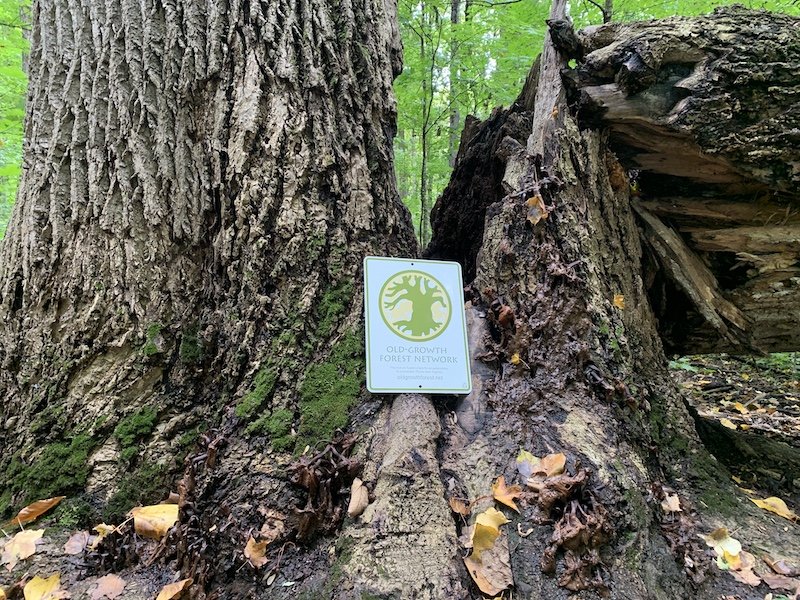Michigan State University Adds a Forest to the Network
By Network Manager, Nick Sanchez
The Agricultural College of the State of Michigan was established in 1855, the first land-grant university in the country. Now Michigan State University, the campus protects several remnant forested natural areas including the 78-acre Baker Woodlot, which were once part of the large forest that covered the area. On Saturday, October 7th, faculty from the MSU Department of Forestry, volunteer county coordinator Jim Hewitt and I joined 75 local forest fans who helped us welcome Michigan’s 10th forest into the Old-Growth Forest Network. The Department of Forestry curated expert-led hikes through Baker Woodlot to discuss its history, ecology and showcase its natural features.
Baker Woodlot is a welcome ‘wall of green’ skirting the edge of campus. Visitors can walk the nearly 2 miles of loop trails maintained through the forest, stopping to admire vernal pools, spring ephemerals or outstanding fall color. The most notable trees are the large sugar maple, American beech, tulip poplar, and northern red oak. The forest serves as a critical greenspace for students, faculty and staff, and a training ground for aspiring foresters, wildlife biologists, and other disciplines.
The campus occupies the ancestral, traditional and contemporary lands of the Anishinaabeg - Three Fires Confederacy of Ojibwe, Odawa and Potawatomi peoples, residing on lands ceded in the 1819 Treaty of Saginaw. Indigenous uses, firewood harvesting, experiments led by forestry faculty, and much-needed forestry demonstrations in a time when forests across the state were being exploited, are all part of Baker Woodlot’s storied past. Today, the forest is protected by MSU as a Class A Natural Area, and while some areas show the scars and pressures of development and the errant plants that follow, large portions either retain or have redeveloped the old-growth characteristics of a maple-beech forest.
This forest is of foundational importance to me and working with MSU to plan this event has made me proud to be a Spartan and equally proud to represent the Network. In the fall of 2009, I had the opportunity to switch my college major to Forestry. One of my first forestry classes was dendrology, the scientific study of trees, during which we spent many hours in Baker. Swapping our desks for clipboards, we huddled around Dr. Rothstein as he held up a leaf, sketching outlines and jotting down notes; serrated or double-serrated, shade tolerant or intolerant, xeric or mesic. This forest was an outdoor classroom that we returned to many times throughout our program, rain or shine, from learning tree identification to finally creating a forest management plan. While we used the forest extensively, its value as an old forest was not a part of the lesson. Recognizing it in the Old-Growth Forest Network is a way to highlight those values and hopefully convey its importance to future Spartan foresters who will undoubtedly remember the beauty of the old forest they trained in and carry that with them as they grow into managers, stewards and protectors of our nation’s forests.
Network Manager, Nick Sanchez, representing OGFN at his alma mater.




